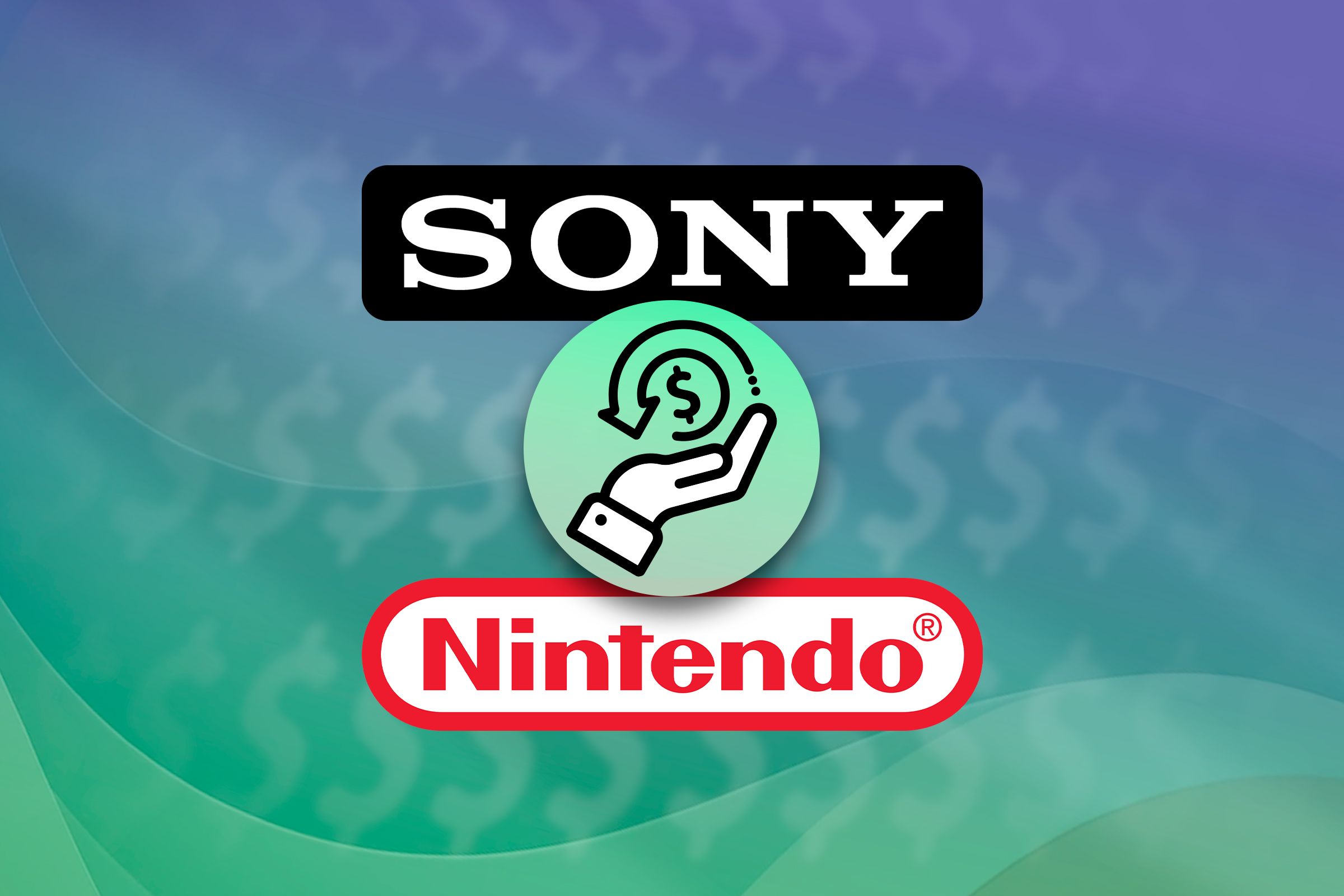Key Takeaways
- Sony and Nintendo have outdated refund policies for digital games, lacking automatic processes seen on other platforms.
- Microsoft, Steam, and Epic Games Store offer more consumer-friendly refund systems with clear guidelines.
- Sony and Nintendo risk losing customers to competitors by not updating their refund policies to meet industry norms.
With the world shifting from physical to digital game media, it would be nice if everyone could agree on how refunds work. Unfortunately while some companies are leading the charge in consumer friendliness, others seem to be more than a little behind the times.
Sony and Nintendo’s Current Refund Policies
Yes, it’s the two Japanese gaming giants that seem to have a rather old-fashioned approach to digital games when it comes to refunds. Starting with Sony, the only way to get a refund for digital content is to never download it, and request a refund within 14 days of purchase. This means that if you download a game to your PlayStation and don’t even open it, you have no recourse.
Of course, you can get in touch with a support representative from Sony, and sometimes you can convince them to refund you, especially if a purchase was made in error or without your permission, but in my experience this is a pain, judging by how much hassle I went through to refund an accidental double purchase of PlayStation Plus annual subscriptions.
Sony’s lack of a friendly refund policy was really put under the spotlight with the PlayStation 4 release of Cyberpunk 2077. A game so broken, it required that Sony create a special refund claim channel just for that title. Something they wouldn’t have to do if they already had a general purpose, automated refund system. It took months for me to get my Cyberpunk 2077 refund, by which time I had already purchased the PC version and finished it three times.
Nintendo’s attitude towards digital refunds makes Sony look downright generous in comparison. According to Nintendo Customer Support:
We are unable to provide refunds or exchanges for mistaken purchases.
Please be sure to read the game descriptions and check out the screen shots available through the Nintendo eShop before making purchases. We also encourage you to visit nintendo.com for information about the games available for our systems. In addition, many websites make reviews available of games which you can use to make your purchasing decisions.
Parental controls can be set on Nintendo systems that allow parents to set restrictions on Nintendo eShop purchases, if applicable.
Which is a polite way of saying your only option is not to buy a broken or incorrect item in the first place! All sales are final, no refunds!
The way Sony and Nintendo handle the issue of digital refunds is in stark contrast to their competition. Here’s what Microsoft has to say about Xbox refunds:
We provide Digital Game Product refunds as part of a consistent and reliable buying experience. Most people pursuing a refund just want to solve a problem, but sometimes the system is abused. If it appears refunds are being abused, we reserve the right to stop offering them except where legally required.
All sales of Digital Game Products are considered final, but we understand there may be extenuating circumstances. When you request a refund for these products, and depending on the purchase or content type in determining refund eligibility, we consider a variety of factors like time since date of purchase, time since release, and use of the product.
Making a refund request is easy, there’s even a special refund request page for it. The purchase must be less than 14-days old, and you must not have a “significant” amount of play time, although there is no clearly stated time limit. So if you buy a game and it’s of very poor quality or has technical issues, you’ll most likely get your refund.
On PC, digital storefronts have similarly convenient refund policies. Steam offers automatic refunds for games that have been played for less than two hours and have been purchased in the last 14 days. I have also successfully refunded games in the past that had more than two hours of playtime by explaining that it was because of trying to get the game to work or another legitimate reason to have more than two hours on the clock. However, anything outside of the eligibility window is at Valve’s discretion. Also, in case you didn’t know, if you bought a game shortly before it went on sale, you can ask for a refund and then re-buy the game at the new lower price! The Epic Games Store refund policy is almost exactly the same, so both Steam and EGS are virtually on par when it comes to refunds.
Why This Will Be Good for You, Sony & Nintendo
I don’t have any special insights into the reasons that neither Sony nor Nintendo offer similar refund policies to the rest of the industry. Perhaps they’re afraid of it being abused, or maybe their dominant position in the gaming market means they don’t have to care about offering consumer-friendly policies, unless compelled by local laws.
Whatever your reasons, Sony and Nintendo, I think you’re missing a trick here. While some small number of people might try to abuse a system like this, there are clearly ways to limit that. Which means you’re missing out on benefits you may not have considered. When I buy a game on Xbox or Steam, I do it with confidence. Because I know that if the game turns out to be a lemon, I can almost certainly get my money back. It wouldn’t be such a glaring omission if game demos were still a thing, but they’re the exception rather than the rule these days. To add insult to injury, Sony locks game trials, which let you play a game for a few hours without buying, behind a PlayStation Plus subscription.
Letting players get automatic refunds using the 14 day, two-hour rule is a small price to pay if it makes it more likely that people will hit that buy button in the first place. Perhaps even more important than that, it’s a simple way to generate goodwill from your customer base.
What We Want From Your Refund Policy
The good news is that other companies have paved the way, so you don’t even have to reinvent the wheel. Give us a 14-day window, with a playtime limit to automatically refund unwanted purchases. Let us refund games that have just gone on sale, or have become part of a subscription service within a certain window of the purchase. Alternatively, or perhaps even better, let us trial games without having to pay for the privilege. Game trials are more likely to lead to a purchase, so it makes no sense to me why this would be a subscription value-add. It benefits both the platform and the developer, without having to develop separate demos.
The longer Sony and Nintendo go without a review of how (or if) they offer refunds, the more attractive alternative services look. It only takes one bad experience to turn a customer off for life, and refusing a refund for legitimate reasons is certainly near the top of the list for good reasons to take your business elsewhere!


دیدگاهتان را بنویسید